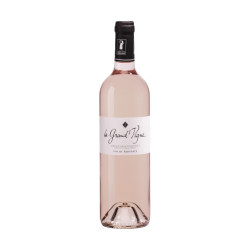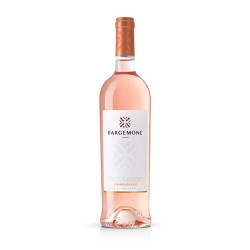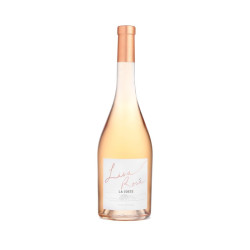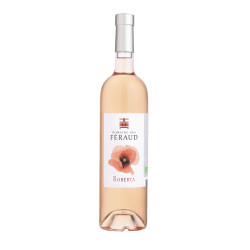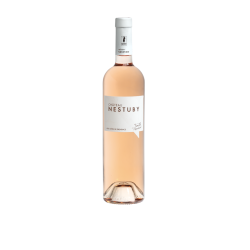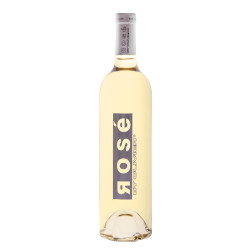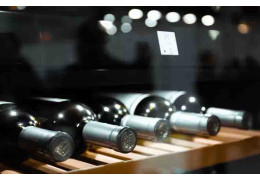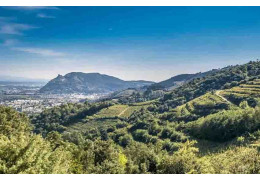Unbeatable !
ROSÉ WINE: WHICH REGIONS OF FRANCE PRODUCE IT?

WHICH REGIONS OF FRANCE PRODUCE ROSÉ WINE?
When you think of "rosé," what are the first images that come to mind? Sunny terraces, summer, glasses shared with friends, and especially... Provence and France! While French wine exports well abroad, one type of wine particularly represents our culture: rosé. The rosé wine market, both in terms of production and consumption, is largely driven by France. Although rosé is often associated with Provence, many other regions also produce it. Indeed, where red wine grape varieties are grown, rosé can be found. Let's take a tour of France's rosé wine regions.
France, the Uncontested Leader in Rosé Wine
The rosé market is experiencing a global boom. Between 2002 and 2018, worldwide consumption increased by 40%*. This impressive figure is driven by the consumption of rosé wines in France and benefits French winemakers.
Indeed, the French are responsible for 34%* of the global consumption of rosé wines. One in three bottles of rosé opened is opened by a French person! True ambassadors of this tradition, our friends in Provence have inspired Americans, who have become the second-largest consumers, charmed by the elegance of southern France.
In terms of production, France leads a top trio. Along with the United States and Spain, we produced 64%* of the world's rosé wines in 2018. This figure corresponded to a 31%* increase compared to the previous year.
Rosé is trendy and is significantly developing.
The Different Varieties of Rosé: How is Rosé Made?
While Provence is at the forefront, all rosés benefit from this trend. This is fortunate because rosé is a color with a thousand possibilities. To make rosé, all you need are red grape varieties. The winemaker simply performs a direct pressing or a very short maceration, or "bleeds" a vat of red wine at the beginning of maceration.
Therefore, there are as many possibilities for rosé wines as there are skills, climates, grape varieties, and terroirs. A good rosé is a perfect balance of tannin extraction and aromas to achieve a good wine with a beautiful color.
It is important to note that making rosé wine by blending white and red wines is not allowed in the European Union.
What Are the Main Regions Producing Rosé Wine?
Rosé wines can be found in every wine region of France. However, the styles produced vary due to different climates and available grape varieties.
ROSÉS FROM PROVENCE AND THE SOUTH
The main ones are, of course, the rosés from Provence. The region specializes in this color, dedicating no less than 80% of its production to it. Provence accounts for 40% of the production of AOC rosé wines in France. Benefiting from an incomparable Mediterranean climate, the vineyards of Provence produce complex and flavorful rosé wines with an elegant pale color. These wines are mainly made from Grenache, Cinsault, and Syrah. You may also find Mourvèdre, Cabernet Sauvignon, or the local variety Tibouren.
Surrounding regions produce rosé based on the same grape varieties (excluding Tibouren) as well as local varieties unique to each terroir. In the southern Rhône Valley, for example, the production of Grenache, Cinsault, and Syrah results in excellent rosé wines. This is notably the case in Tavel, where the only wine produced is the famous Tavel rosé.
Many rosés are also found in Corsica and Languedoc-Roussillon (mainly in the Roussillon part).
ROSÉ DES RICEYS AND ROSÉS FROM THE NORTHEAST
North of Provence, a different grape variety reigns supreme. Pinot Noir, which dominates Burgundy, Champagne, and Alsace, allows for the creation of excellent and lesser-known rosé wines.
Rosé des Riceys is a flagship appellation of this type of rosé wine and originates from Champagne. The advantage of Pinot Noir is that it allows for a longer maceration than southern grape varieties, as the berry naturally has fewer tannins. Rosés from this part of France are delicate and fruity. They are found in Burgundy, Alsace, Jura, Champagne, and Beaujolais.
In Beaujolais, Gamay expresses itself through light and lively rosés.
ROSÉS FROM THE WEST, THE NEW EL DORADO?
French rosés have historically come more from the eastern part of the hexagon. However, production is constantly increasing in Bordeaux and the Loire Valley, allowing for the discovery of new profiles.
In Bordeaux and the southwest, you find round, aromatic, structured, and full-bodied grape varieties that offer very interesting rosés: Merlot, Cabernet Sauvignon, Malbec, and Cabernet Franc.
Further north, some of these grape varieties are also found, particularly Cabernet Franc, which reigns supreme. In the western Loire Valley, particularly delicious and rounded rosés are made from local grape varieties such as Pineau d'Aunis and Grolleau Noir or Gris. You will also find Gamay and Pinot Noir, especially closer to the center (Sancerre, Reuilly, Menetou-Salon...).
The world of rosé wines, although lesser-known and still underexplored outside of Provence, is as rich as that of red wines. You find the same characteristics as with red wines: grape varieties, methods, and climates intersect to offer a wide selection of rosé wines for any wine enthusiast
